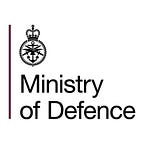Royal Marines take on the harsh conditions in Norway
Around 200 miles inside the Arctic Circle, where the sun barely rises and the temperature plummets below -30C, more than a thousand Royal Marines are learning to become winter warriors.
45 Commando are in the north of Norway learning to be winter warriors and have already completed the first phase of their Arctic survival training in bitterly cold temperatures.
Royal Marines have deployed to the frozen Arctic in large numbers for many years for their annual cold-weather workouts.
As 3 Commando Brigade’s highest readiness unit, 45 Commando must be prepared to deploy anywhere in the world at a moment’s notice. That includes the most extreme climates known to man, including the Arctic, jungles and deserts.
During the deployment, the Royal Marines will learn the key skills needed to survive in one of the most extreme climates on the planet.
The survival phase of training includes learning how to construct snow shelters, navigating by the stars and how to trap animals in a survival situation.
Firstly, commandos must take on the survival training before learning to move and fight in one of the planet’s most inhospitable regions on the Cold Weather Warfare Course.
Half the battle is managing the temperature, lack of daylight and the terrain. Snowstorms can occur suddenly, so learning the basics of survival is key to operating in the Arctic conditions.
The initial phases on the Arctic training concludes with the infamous ice-breaking drills. Commandos have to plunge into a hole in the ice and climb out of the water unassisted using their ski poles.
This brutal part of the training is designed to help Royal Marines recognise and reduce the risks of cold shock — a physical response to being immersed in cold water that can rapidly weaken the body and even kill.
Crossing a frozen lake or river can bring a tactical advantage but comes at huge risk, so ice breaking is about preparing for being suddenly dropped into bracing water.
After rewarming from their dip through the ice, those on the survival course head into the wilderness to live from survival shelters.
The Royal Marines are deployed to Norway until March. The Cold Weather Warfare Course has three phases — survival, mobility and warfare, culminating in a final exercise that puts the newly-taught skills into practice.
This is all in preparation for Exercise Cold Response — a large-scale, multinational war games led by Norway in late February and into March.
Cold Response is a Norwegian-led exercise and will see 45 Commando build on the success of their Baltic Protector deployment last year.
This deployment is all part of the UK’s commitment to the Arctic.
